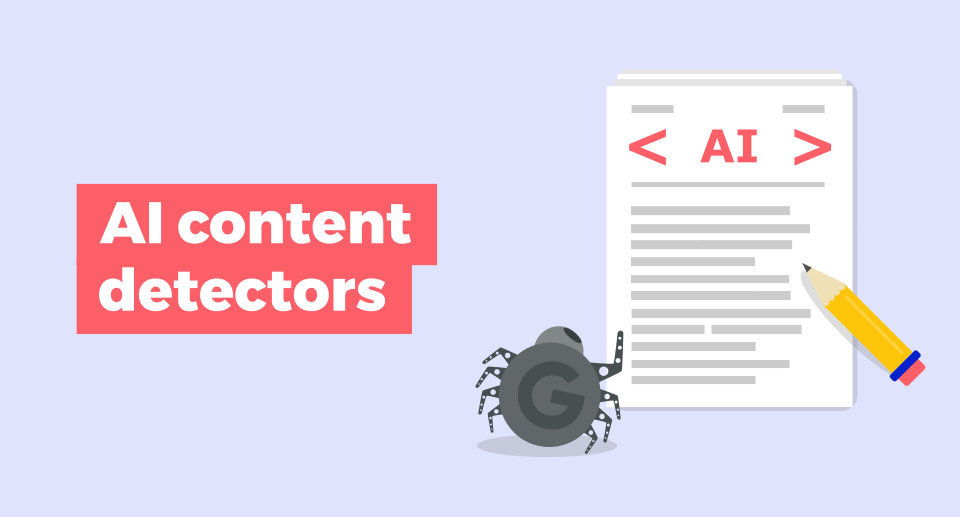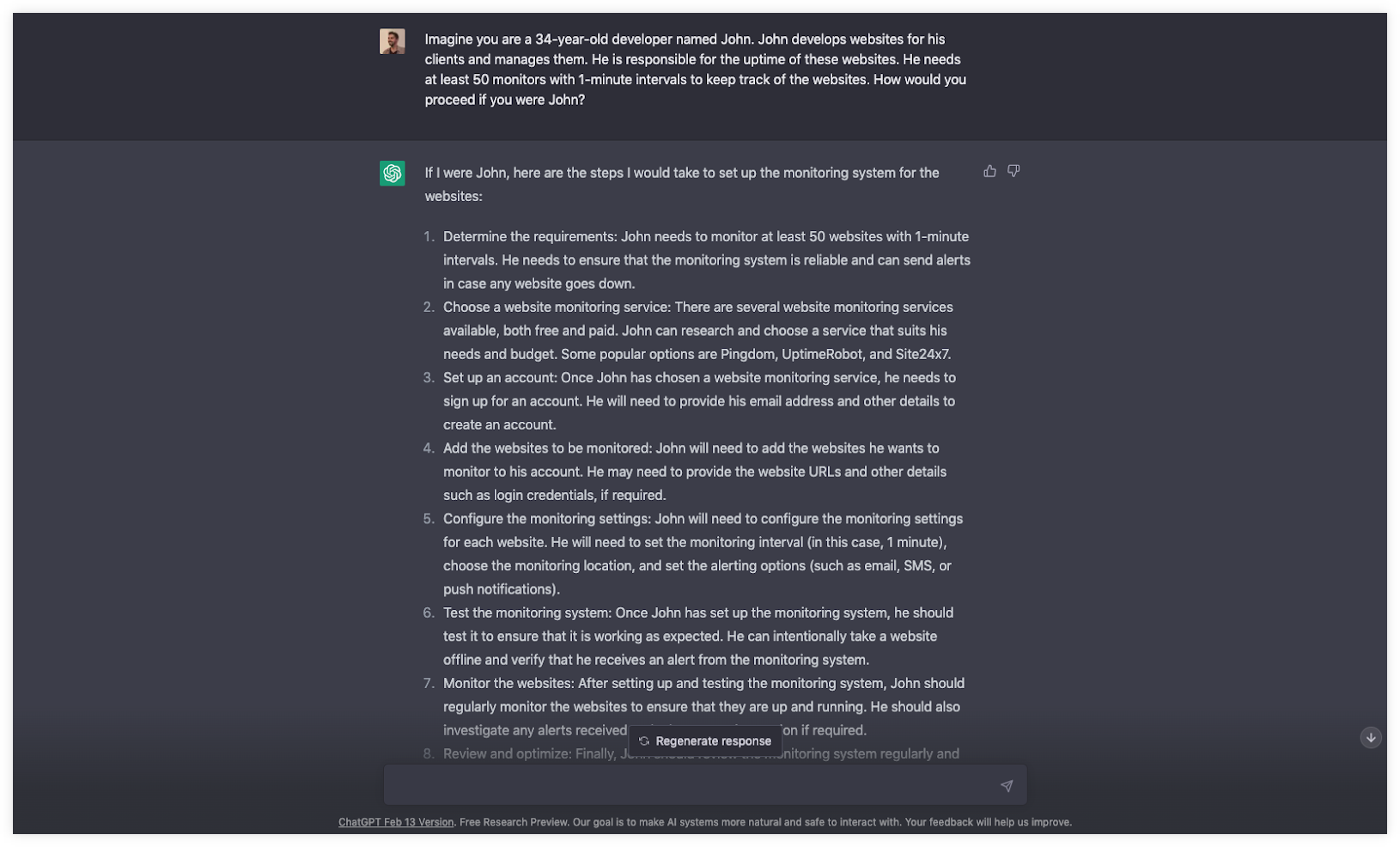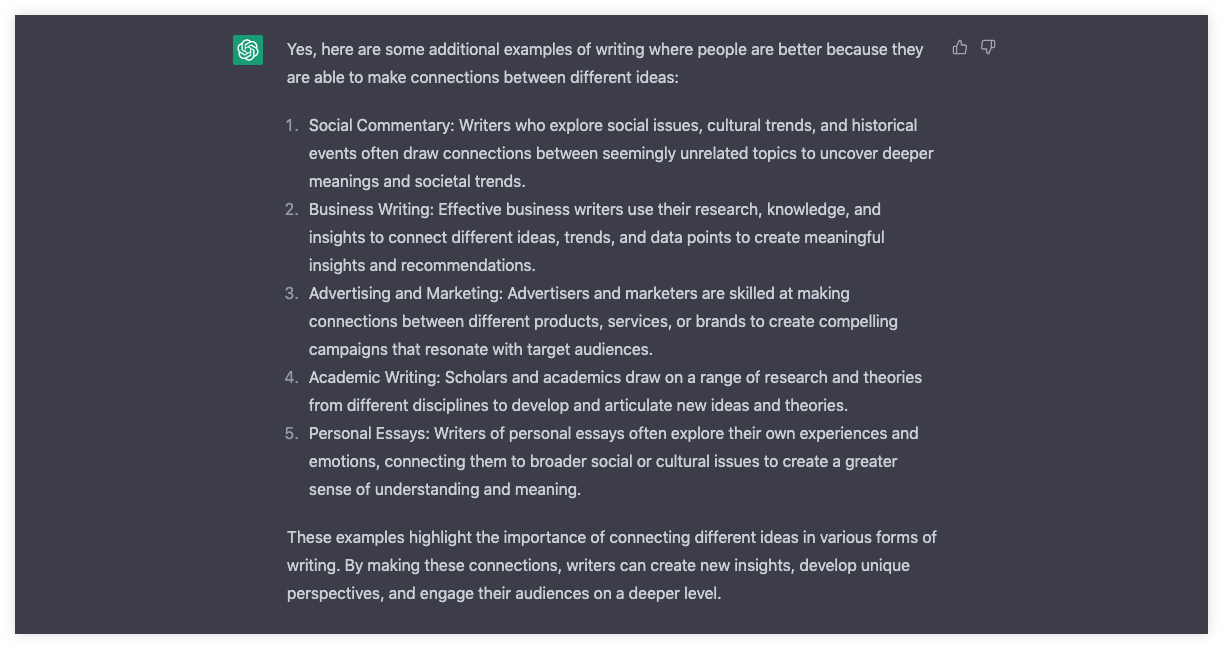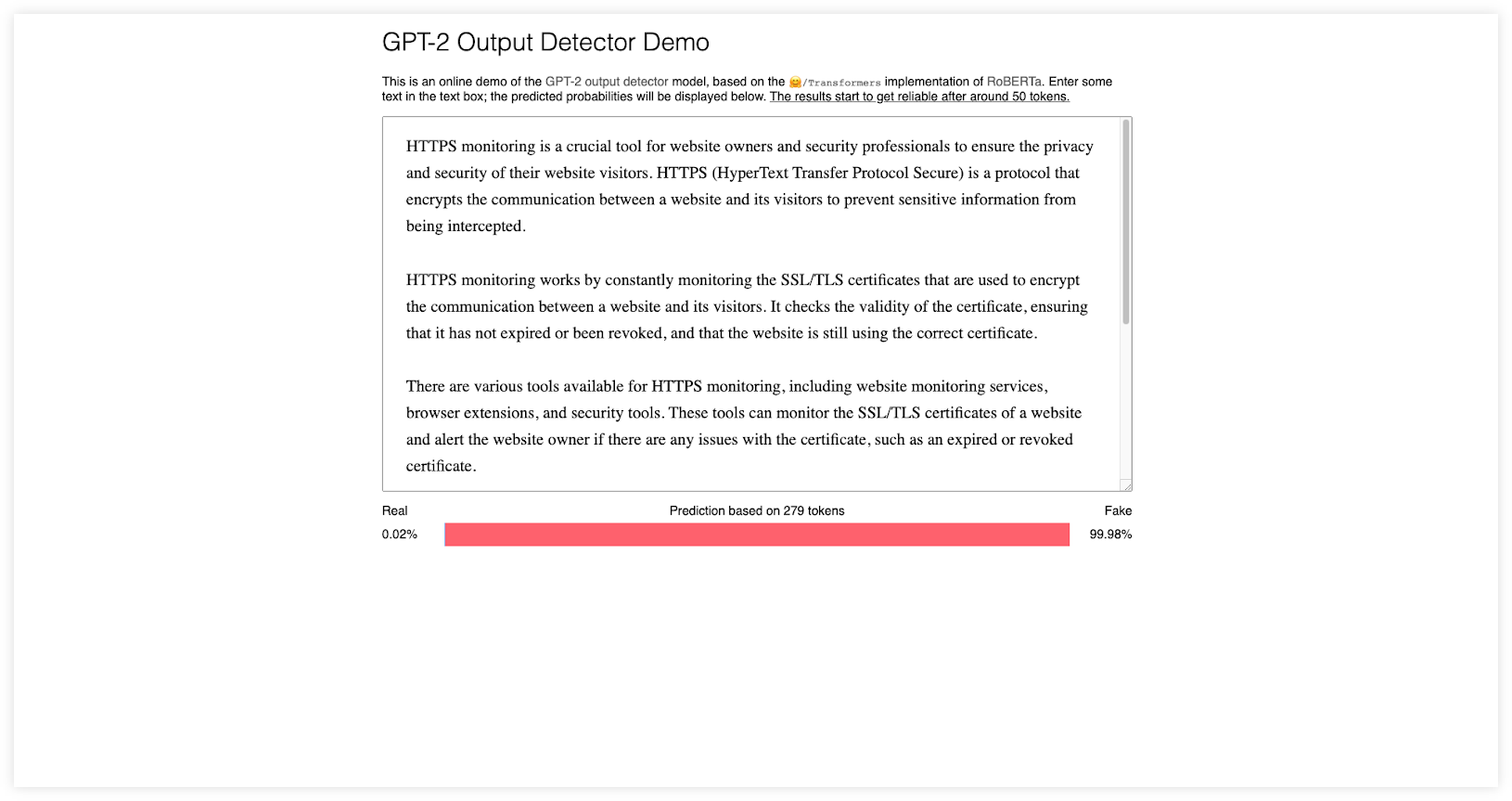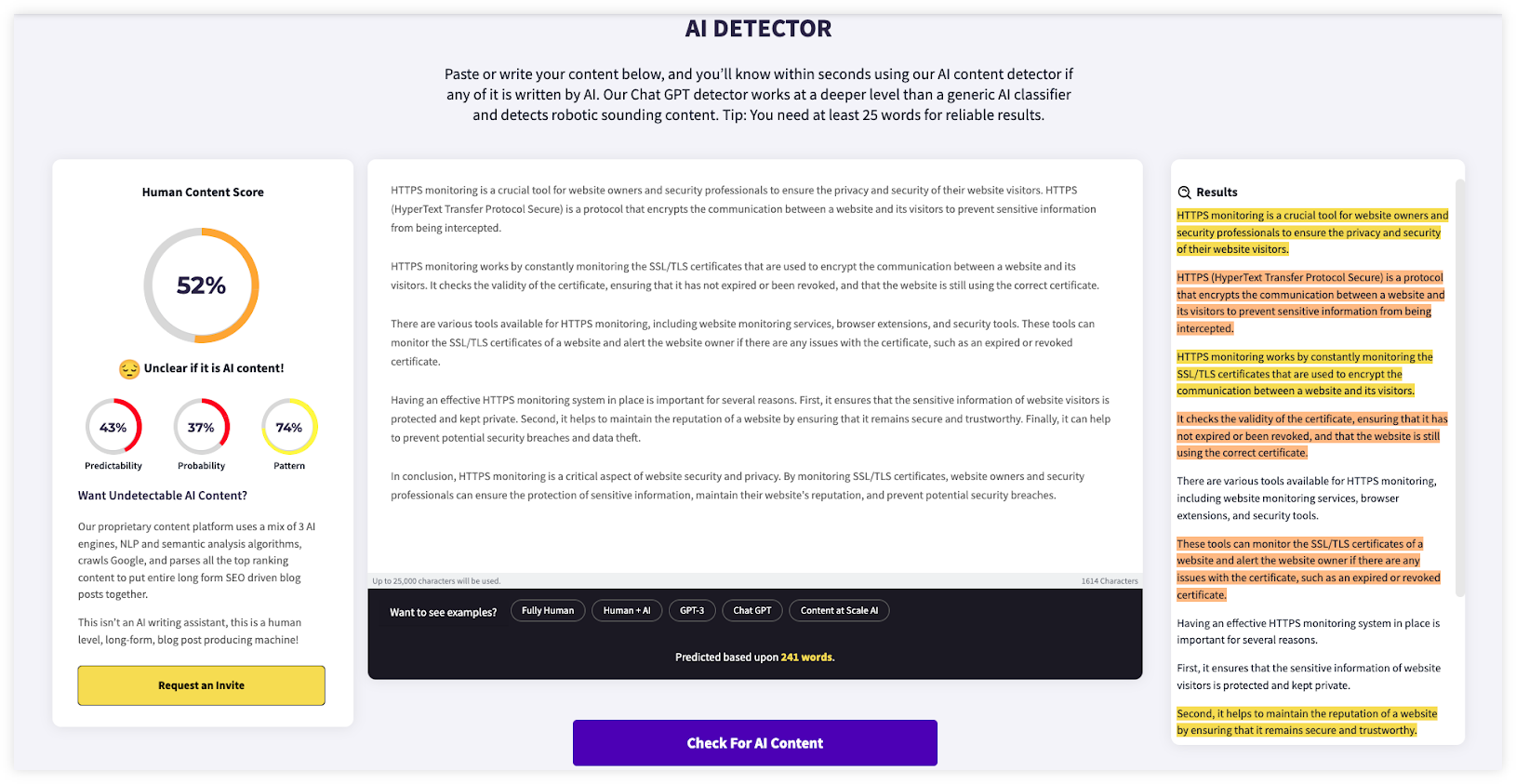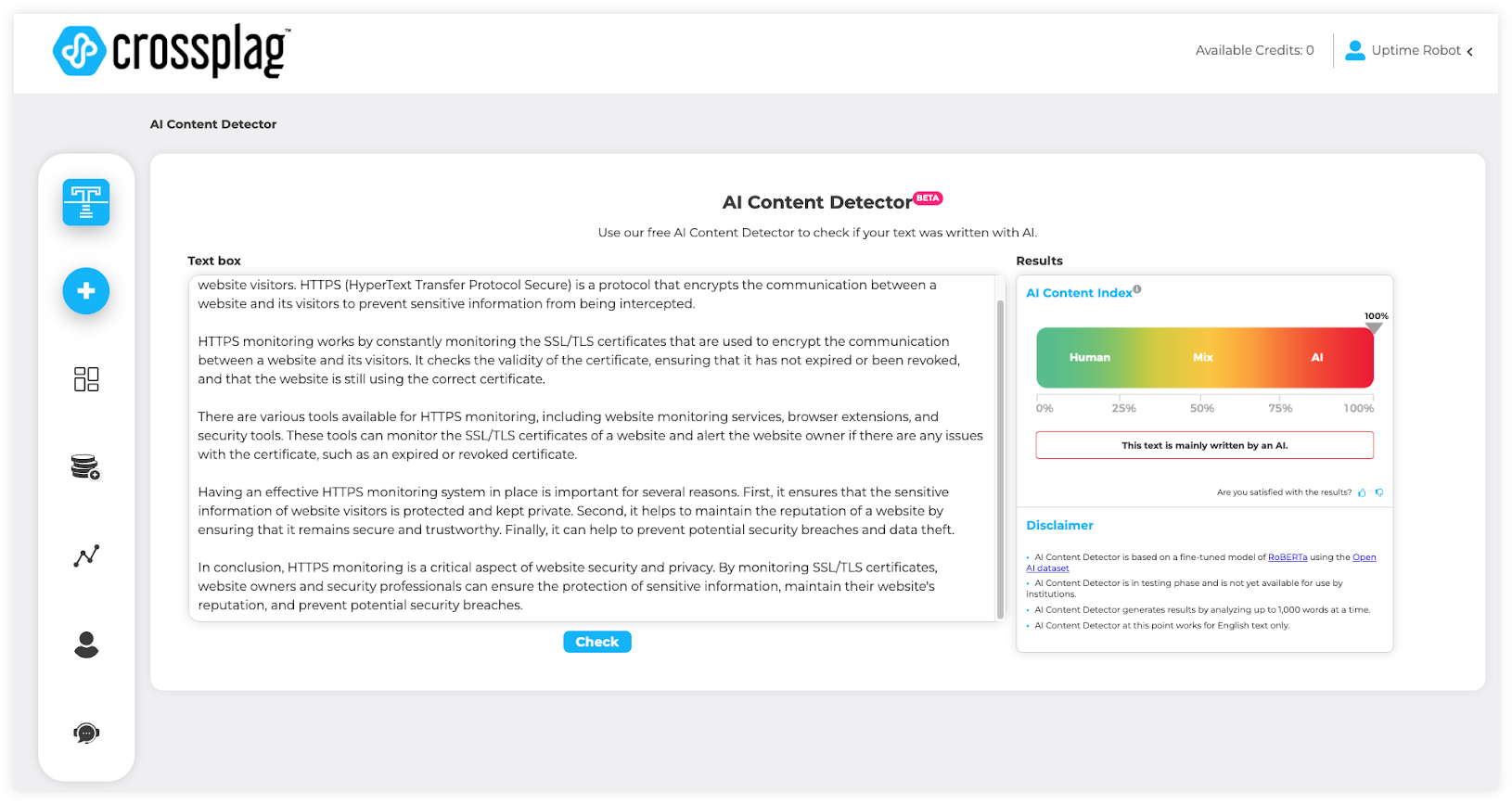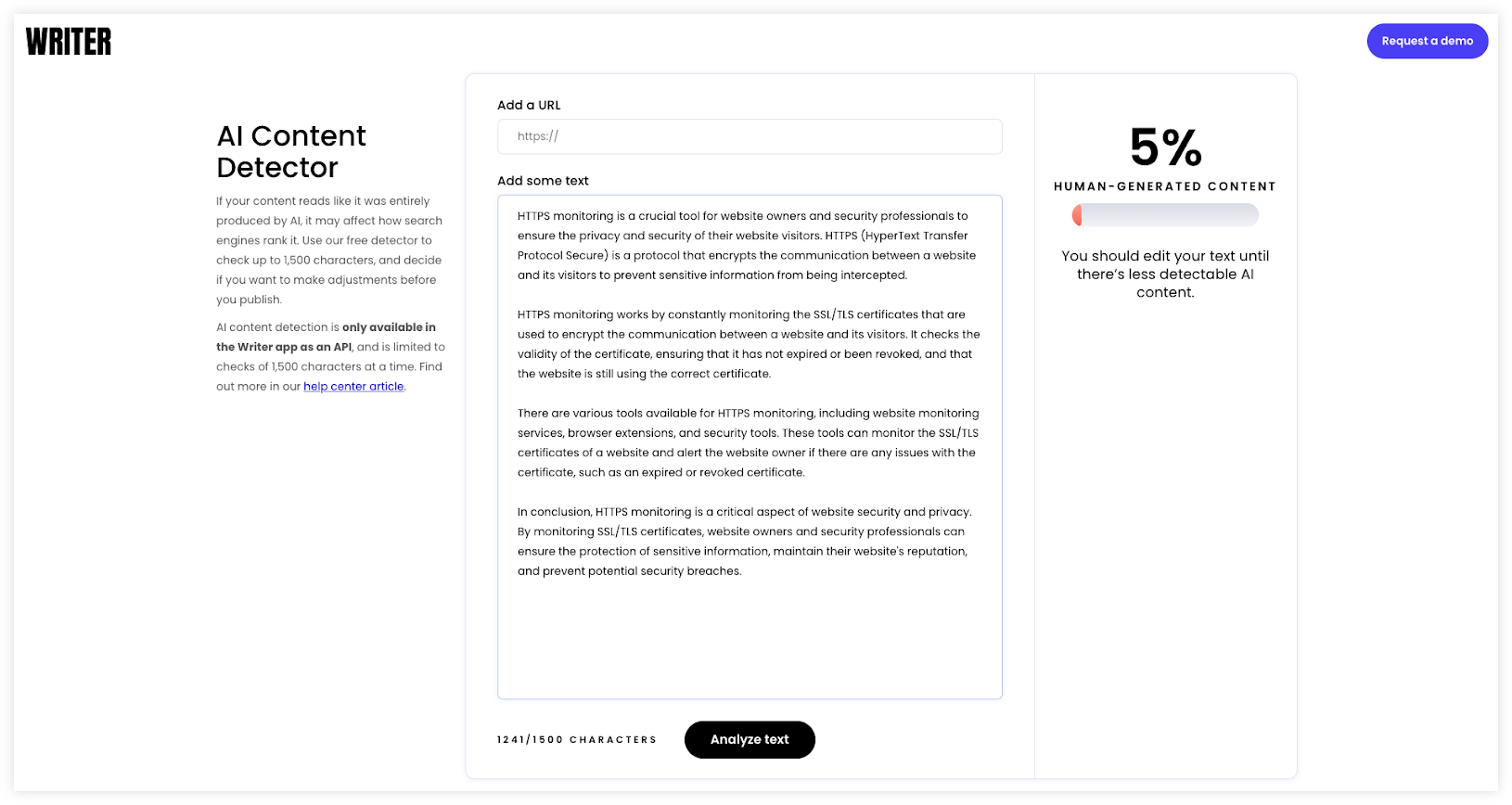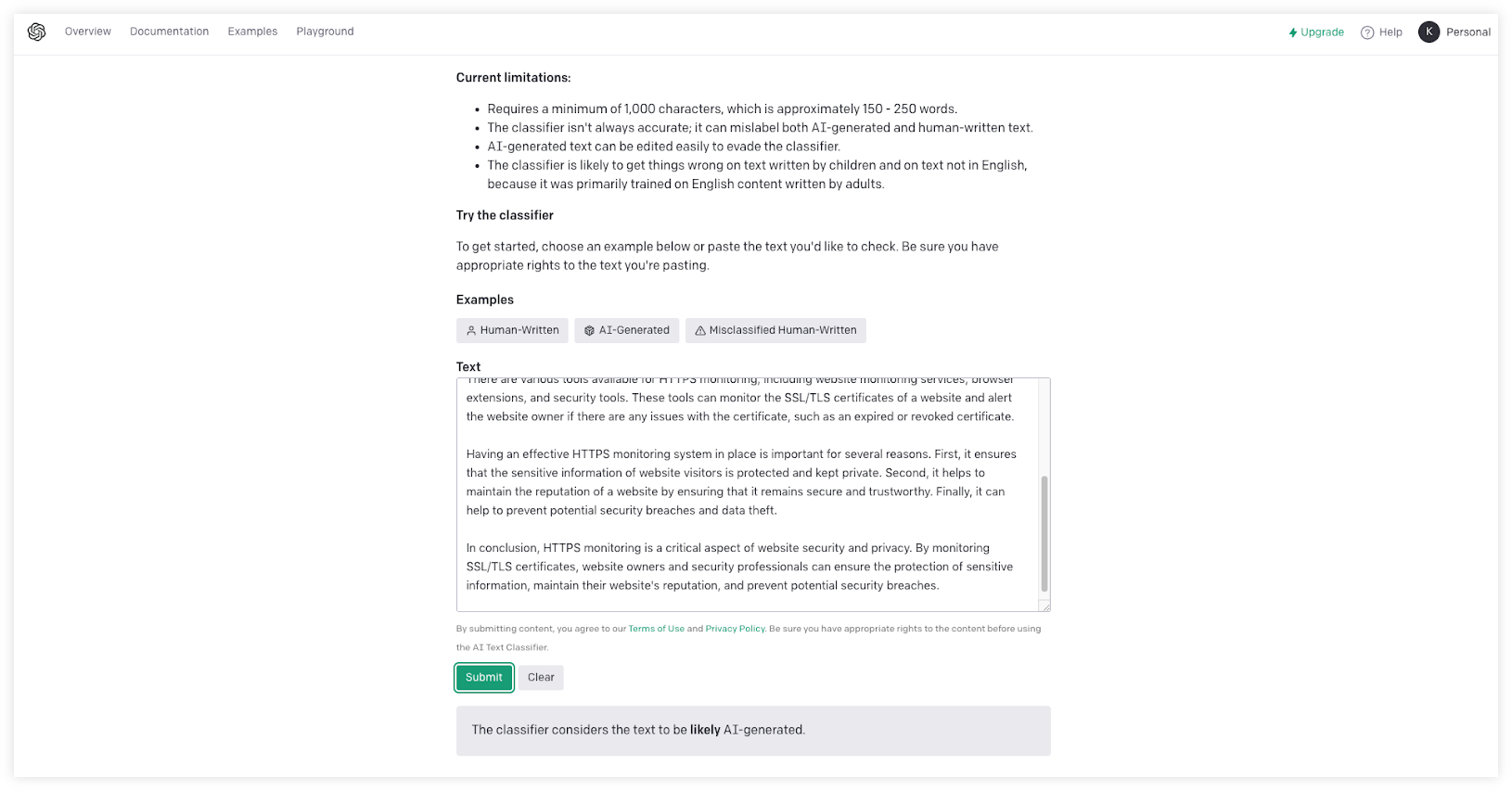Following all the buzz around AI, Google has finally confirmed that it’s not important how the content is created. Quality is what matters most. That means an appropriate use of AI is allowed considering you follow Google’s guidelines.
Although AI has great potential, there are still some significant differences between AI-generated and human-written content that everyone should consider.
What’s the best approach for your content strategy and proper use of AI?
How does Google evaluate content?
For years, generating content to outsmart search engine rankings has been considered a violation of spam policies.
Google rewards content that has the E-E-A-T qualities:
- Expertise
- Experience
- Authoritativeness
- Trustworthiness
This method of evaluation has been around for over 10 years and is determined by a combination of the creator, content, and website.
But not all AI-generated content is bad. In fact, AI has already been used with success to prepare helpful articles and improve marketing efforts.
For example, “41.29% of marketers agree that using AI for email marketing generates higher market value”. But when doing so, it is important to make sure that your email content isn’t flagged by antispam AI detectors.
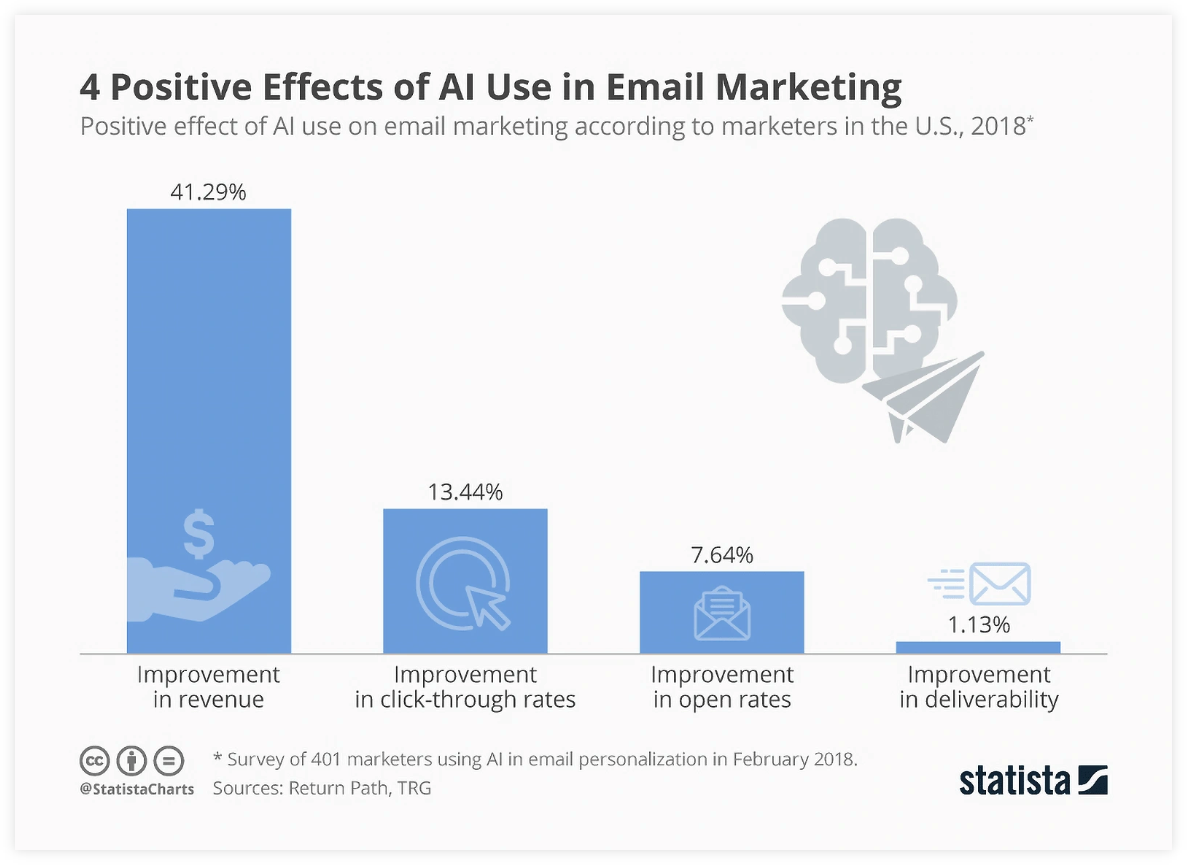
Source: StatistaCharts
The ranking system is designed for results made to benefit people. Therefore, focusing on people-first content is successful long term.
What makes AI-generators better?
It’s clear that AI becomes better every day at writing and other skills. So, should copywriters fear losing their jobs?The quick answer is no. Even though 37% of businesses already employ AI, there’s still a significant gap between the two.
1. Quick results based on facts
There’s no doubt that AI can generate articles for a wide range of topics. It uses algorithms to get and analyze data, converting them in seconds into impressive results based on facts.But these details are gathered from various sources, making them at times unreliable.
2. Proficient in English grammar
AI generators are catching up to humans even in harder linguistic problems like abductive natural language interference. ANLI is a process of reasoning where one tries to infer the best explanation for a given set of evidence.
The difference in score between humans and AI is only 1%.
The truth is, even the best writers make mistakes. Despite multiple rounds of editing, an occasional typo can slip through.
That being said, AI is not recommended for editing as it can’t address concerns like cohesion, sense, and logic.
3. Can simulate different scenarios
Although only humans have the ability to understand the context of the content strategy, AI may be used to simulate different scenarios and help you better understand your target audience.
Simply tell AI to act like a specific persona with all the details and ask it how would it proceed in certain situations:
For example, instruct the AI to respond as a specific person based on the facts you know or assume about your buyer persona.
Provide a specific challenge and ask the AI to proceed as the persona provided to get an idea of how your buyers would act to solve their problems.
You can also ask it about specific problems your personas might have, or try to identify their information channels and buying processes.
Although each buyer is unique, AI is able to offer insights into the life of any persona.
Here’s how our AI persona, John Doe, would describe himself:
“Hi, I’m John Doe, a 34-year-old web developer managing over 50 websites for various clients. I’ve been in the industry for over 10 years and enjoy creating visually appealing, user-friendly websites. When I’m not working, I’m an avid runner and hiker, love to read and learn new things, and enjoy experimenting with new recipes. I feel incredibly fortunate to have found a career that I’m passionate about and to work with so many amazing clients.”
What makes humans better?
There are multiple important factors in generating high-quality content that make AI insufficient.
These strengths that only writers possess can’t be replaced by AI.
1. AI sounds too robotic
Especially when provided with specific keywords.
This notorious chatbot “voice” becomes even more apparent when it comes to an opinionated text. Try to guess who wrote each of the following two paragraphs:
1. “The Netflix status page is a website that provides real-time information about the availability of Netflix services and systems worldwide. It displays the current status of the Netflix platform and any issues that may be affecting its performance, such as outages or scheduled maintenance.”
2. “With nearly 231 million paid subscribers, Netflix is an example of a poor status page. The page is simple to a fault, making it difficult to know if it ever truly updates, which could affect the trust of users negatively.”
If you guessed that the first example is AI-generated, you were correct! The second piece is from 100% human-written UptimeRobot blog about real-world status pages.
2. Humans are creative and funny
While AI uses repetitive sentences and strict formal wording, writers can think outside the box in order to make the content more unique.
AI lacks the ability to deliver captivating and distinct content that incorporates humor and other emotions to sustain the reader’s attention.
Try to guess the author of the following paragraph:
“You should monitor your website because, let’s be real, the internet can be a wild and wacky place. You never know what kind of shenanigans your website might get up to when you’re not looking. Maybe your images will start randomly rotating upside down, or your text will mysteriously change to Wingdings. Who knows? The only way to stay on top of these shenanigans is to monitor your website closely. Trust me, you don’t want to be the last to know when your website decides to start moonwalking across the screen. Stay vigilant, my friends.”
This is what happens when you ask AI to include humor.
3. Writers understand assignments better
Trying to get the right results from AI can be a challenging process and can cost you more time than expected. This is especially true for more complex tasks.
Here’s what happens when you ask AI to write a creative piece about the importance of SEO:
“In a world where billions of websites vie for attention, SEO is the beacon of hope that can guide lost souls to the right destination. It’s the lighthouse on a rocky shore, the North Star in a pitch-black sky, the GPS for the information highway. Without SEO, your website is like a message in a bottle, tossed out to sea with no guarantee that it will ever be found.”
4. In touch with audiences
As a writer, you should have at least some idea of who your readers are, who you want to attract, and what goals you want to achieve with a piece.
You should be able to identify the level of expertise of your target audience and adjust the article accordingly.
AI, on the other hand, simply constructs content based on the guidelines it’s given. So without the knowledge of a human behind the scenes, AI content is likely to be too general to have value.
5. Humans excel at formatting
AI uses one basic structure, typically with similar paragraphs and phrases.
By using lists, short paragraphs, quotes, stats, styling, and headlines, good writers can make content more visually appealing.
As you can see in the walls of texts produced by AI in our examples above, AI content is often much less visually appealing than content written by humans.
6. People make connections between ideas
Only a human mind can comprehend different topics and create connections between complex ideas.
Here’s what AI has to say about the topic:
While humans clearly have an advantage when it comes to complex thoughts and associations, they might also require additional time to research and produce quality content, raising questions about the cost disparity between human-written and AI-generated content.
What is more cost-effective?
Given its ability to produce a vast amount of content quickly, AI is the easy favorite at first glance, but the topic is more complex.
There may be better long-term approaches than relying on AI-generated content – mainly because it can’t create unique content and uses the same algorithms repeatedly. It’s also not very “people-first” oriented.
When creating content, always consider the reader first and ask yourself questions such as:
- Will my existing or intended audience find this useful?
- Does the content demonstrate expertise and knowledge?
- Will someone feel they’ve learned enough after reading?
- Will reading this be a satisfactory experience for visitors?
Although AI may have the upper hand with quantity, good human content writers possess the unique ability to produce high-quality tailored pieces, which can provide far more value than those from AI.
But this doesn’t mean that you can’t use AI to your advantage.
5 best free AI content detectors – are they accurate?
In some cases, it’s hard to tell AI content apart from that of humans, even when using an AI content detector.
In testing various AI content detector tools, we found them to be correct only 70% of the time. We found that there are many factors that can influence the results, such as structure and phrases.
Given that the ongoing competition between AI content generators and detectors is constantly evolving, these results will likely continue to change over time.
For now, there’s no foolproof way to reliably identify content made by AI.
When attempting to identify AI-generated content, look for a lack of depth, emotion, and other captivating elements.
We asked ChatGPT to write 3 different pieces covering the following topics:
- Email blacklists
- HTTPS monitoring
- SEO keyword research
Then, we used the texts to test each of the free AI detectors. We compared the results and assigned them a score based on their success rate:
| AI detector | Results |
| GPT-2 Output Detector Demo | ✅ 9/10 |
| BrandWell | ✅ 9/10 |
| crossplag | 🙂 7/10 |
| Writer | 🙂 7/10 |
| chatGPT Detector AI Text Classifier | 😐 6/10 |
1. GPT-2 Output Detector Demo
The demo version of GPT-2 Output Detector performed the best in our testing.
Available on GitHub, it’s based on the implementation of ROBERTa, which is a robustly optimized BERT pretraining approach used for AI.
It provides the most precise results to two decimal places, and although strong on the coding end, it could use a bit of UX improvements.
2. Content at Scale
What GPT-2 Output Detector lacks in, Content at Scale has improved.
It provides the overall human content percentual score and 3 other results regarding predictability, probability, and pattern.
Additionally, this AI detector highlights the parts that are likely AI-generated.
While it’s well-developed, it’s still in beta and is mainly a part of an automated SEO content generator.
3. Crossplag
You first need to register an account in order to use the beta version of the AI content detector from crossplag.
It’s also based on a ROBERTa model, but not as precise as the GPT-2 Output Detector Demo. We must consider that it’s still in the testing phase.
Allowing you to check up to 1,000 words at a time in a simple interface earns it a solid place in our evaluation.
4. Writer AI detector
The AI detector from Writer is another useful tool on our list. It’s simple to use and stands well in our testing.
It’s limited to 1,500 characters which can effect the results. But on the other hand, it allows you to check specific URLs – a feature that’s missing in other tools.
5. ChatGPT Detector AI Text Classifier
We had great expectations from this tool that’s developed by OpenAI, the same company that brought us ChatGPT.
Unfortunately, it’s only a classifier that can tell the probability of AI-generated or human-written content. It doesn’t provide any specific score or results and is not always accurate.
Even though it’s not the main focus of the company, it’s a well-developed and effective AI detection tool.
How can you use the power of AI?
AI brings a lot of value when used properly, especially in situations when humans may fall short.
Consider using AI to enhance your brainstorming by generating topic ideas and titles, especially on days when you’re struggling to come up with new ideas.
While it may not be the best choice for strategic long-form content, AI can still be useful for generating short descriptions and paragraphs that can be adapted to your audience more easily.
AI-powered grammar checker tools can also provide additional assistance with grammar, spelling, and readability. It will give recommendations, which makes it a useful tool for writers.
Be cautious when using AI for research as it is not possible to confirm the origin, and be sure to add a source to the article. Including such details builds trust and enhances credibility with readers.
Based on the AI you use, you should consider how old the available data set is. For example, ChatGPT is not connected to the Internet and has limited knowledge up to the year 2021.
Conclusion: Humans are better, but AI can help
When it comes to producing content that is both high-quality and engaging, humans are the clear winners.
While only writers can create unique and creative pieces, AI is here to stay and can be used to boost your content strategy.


